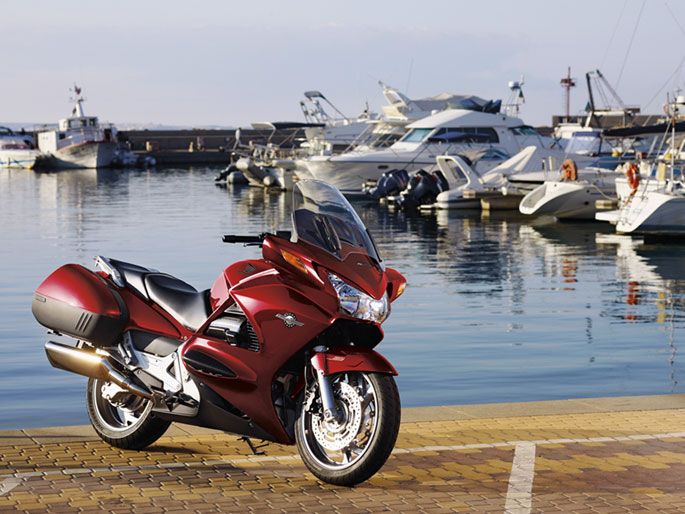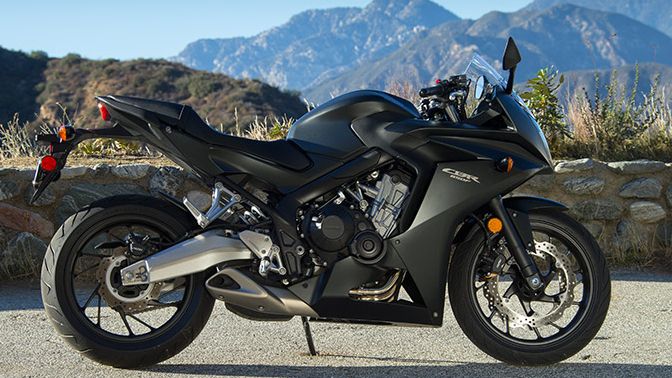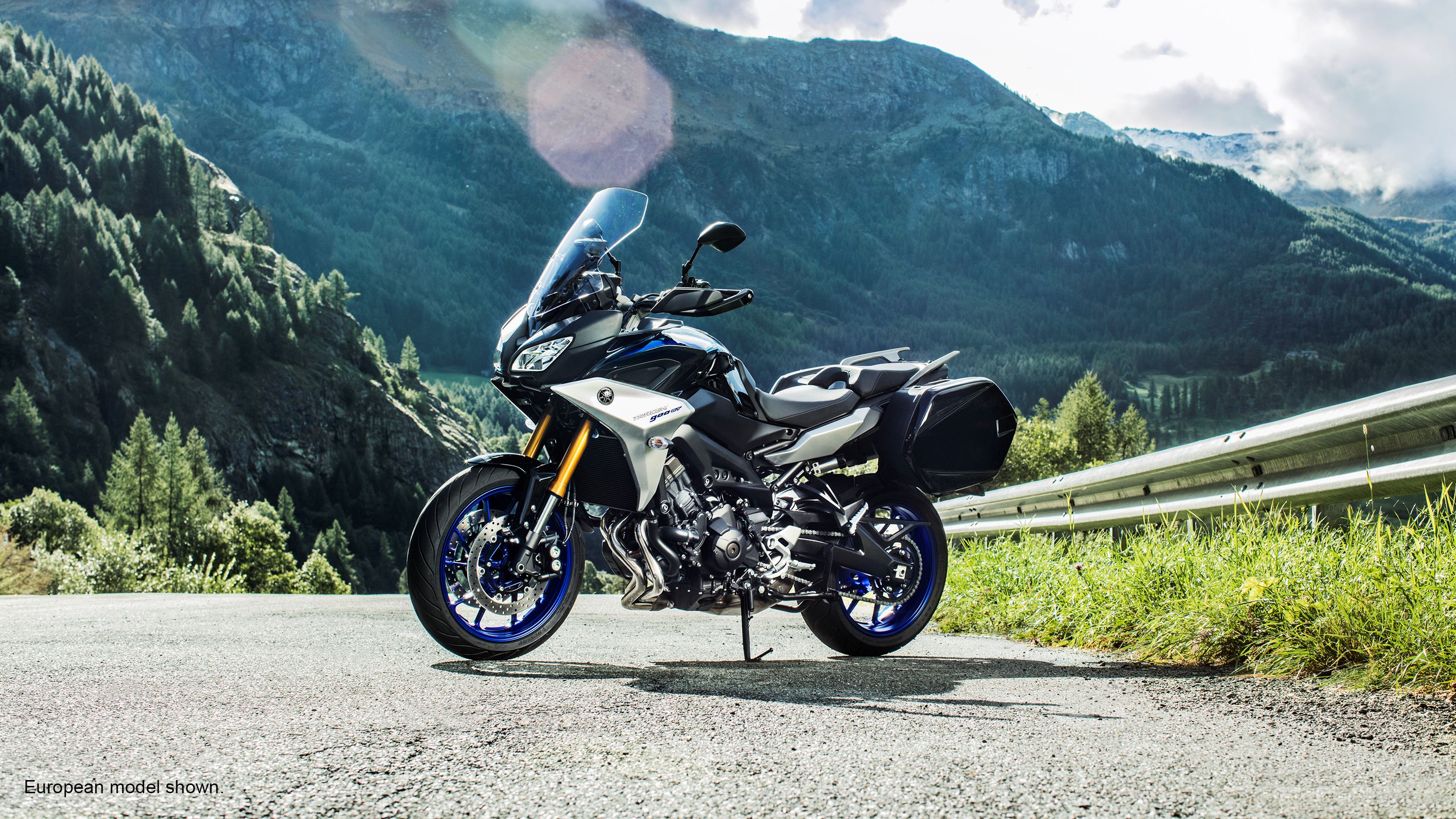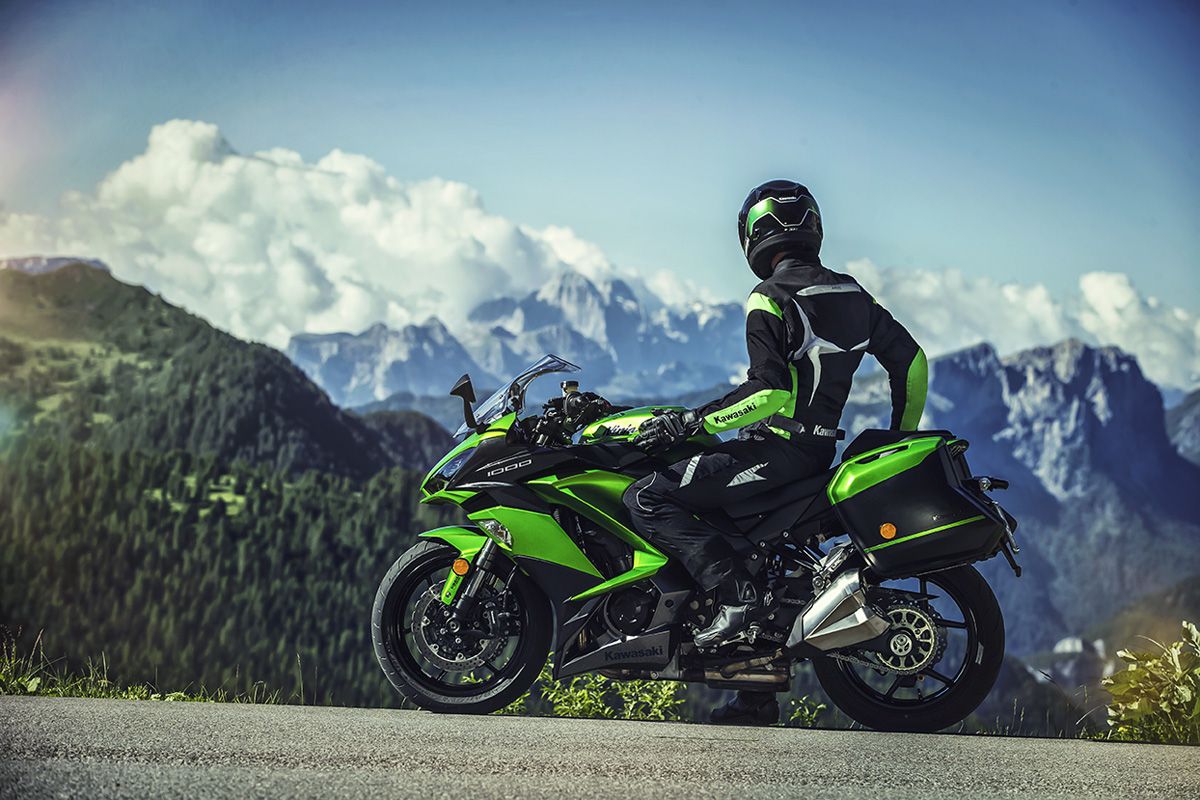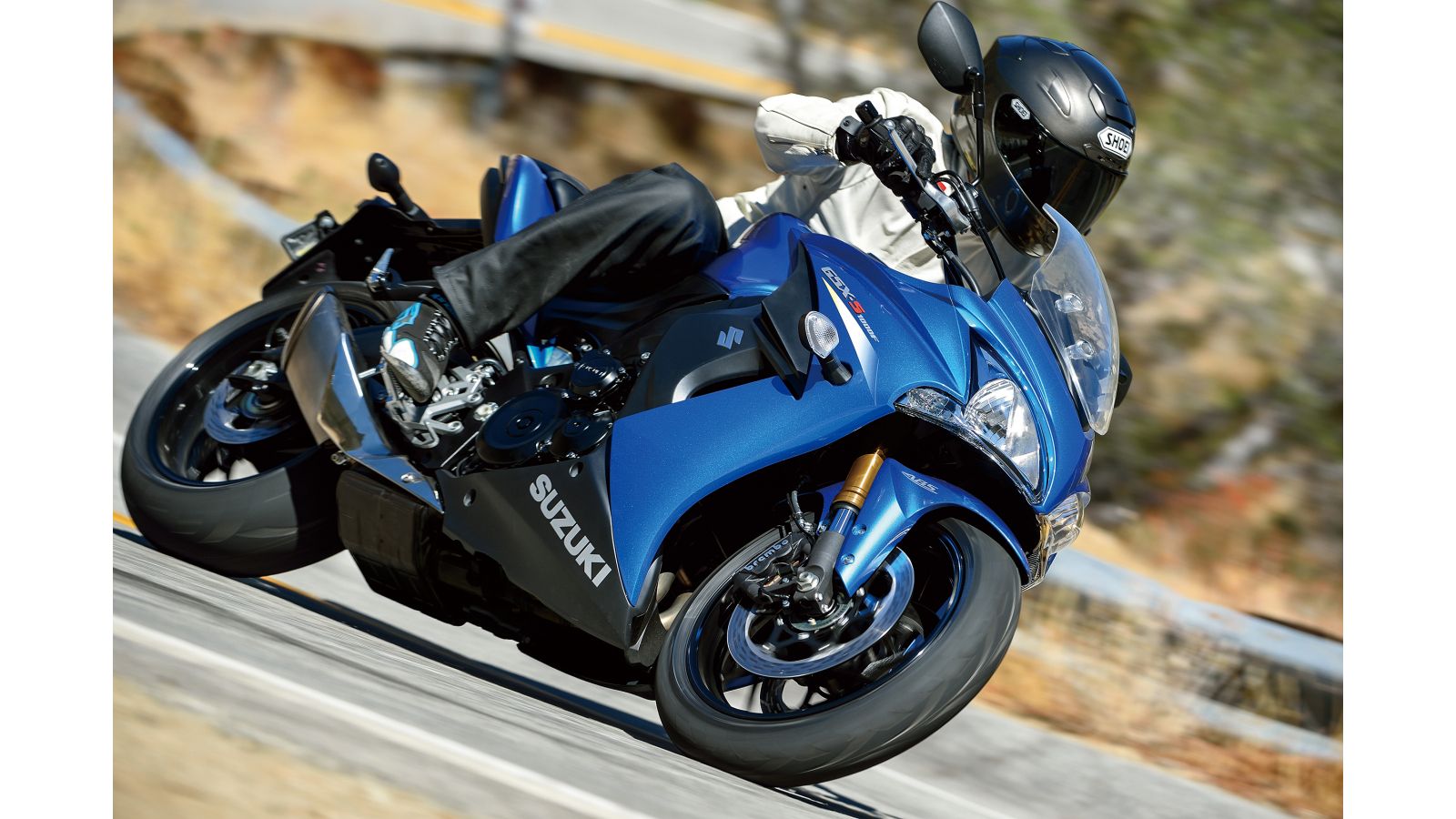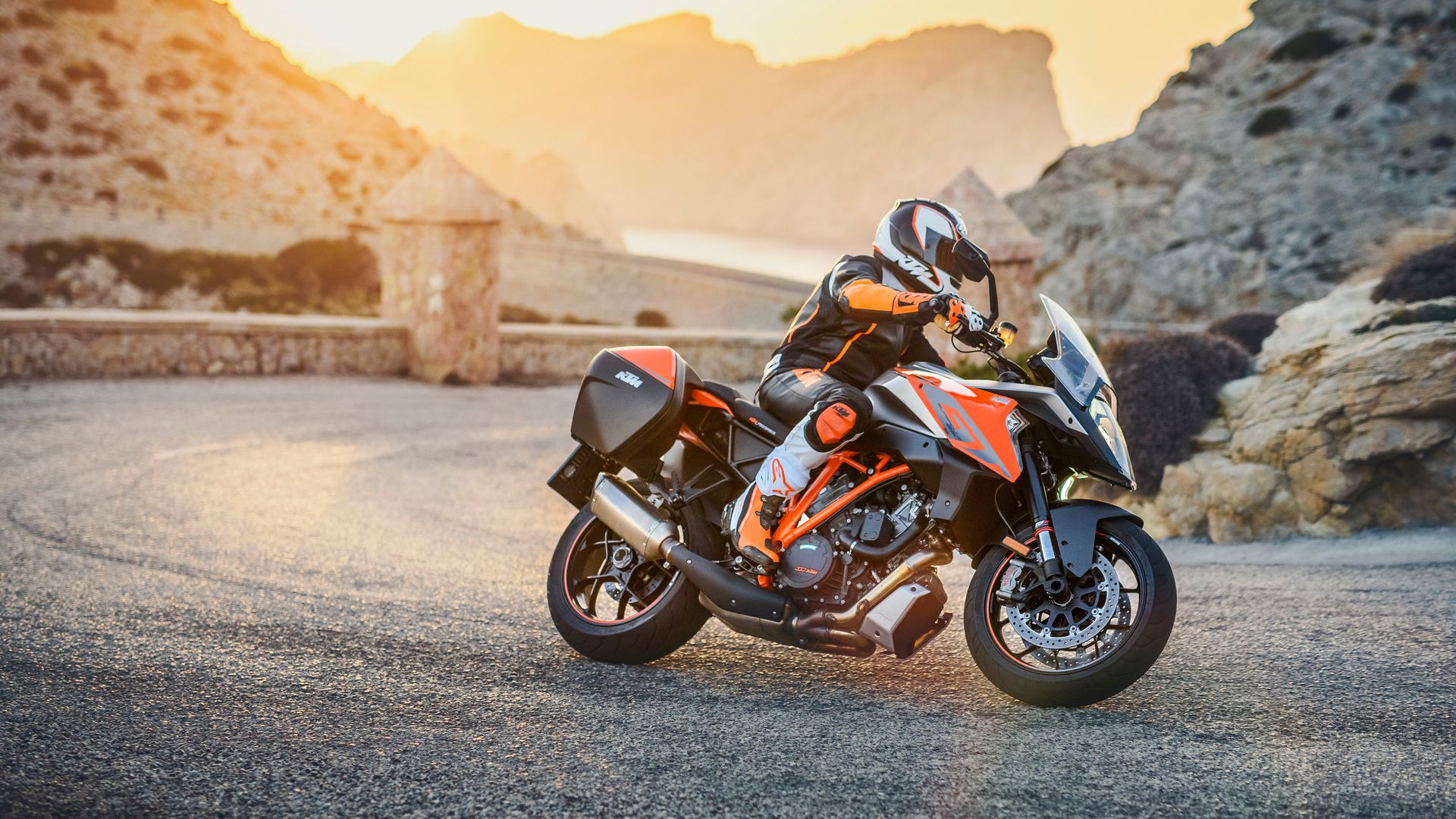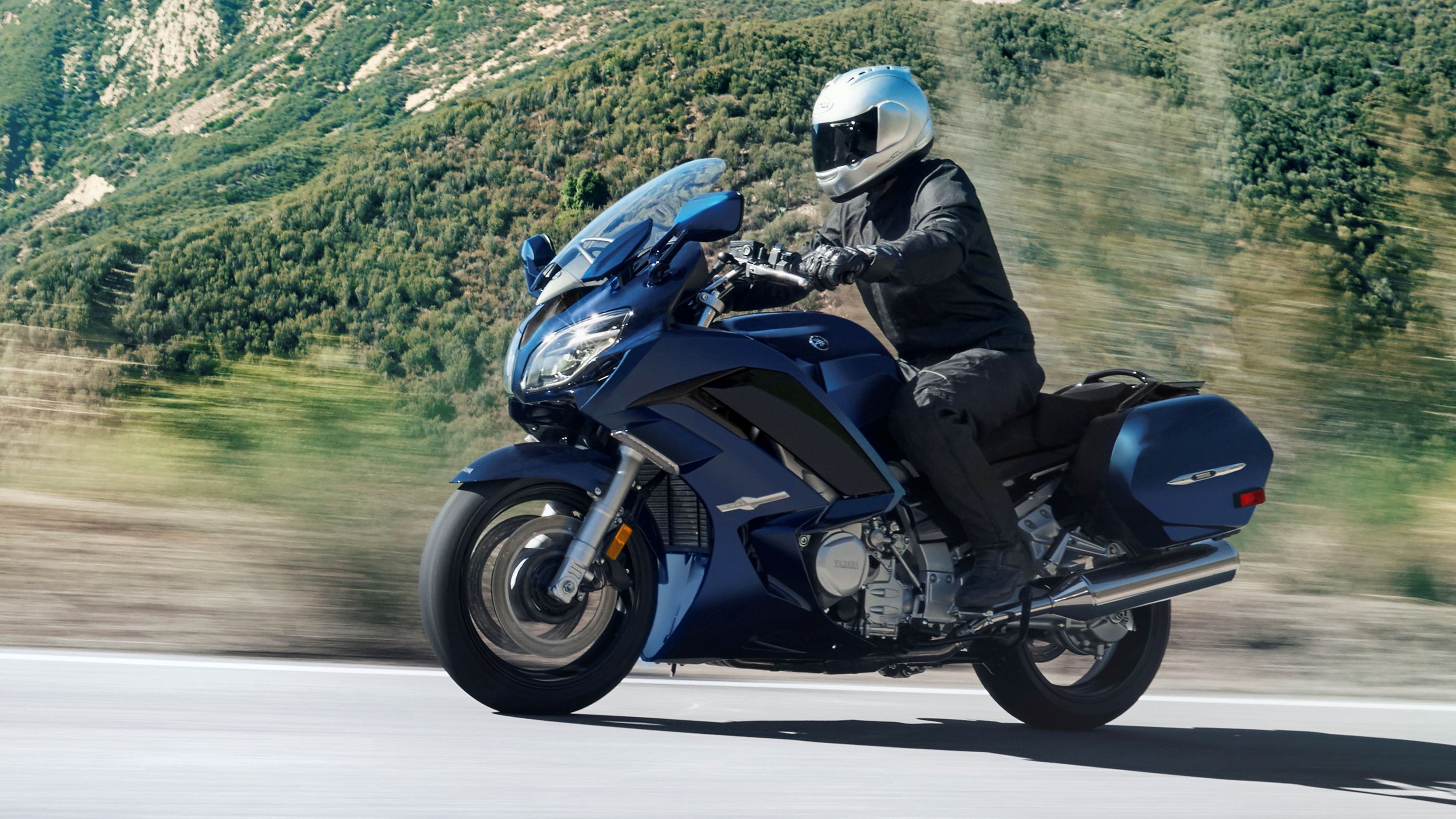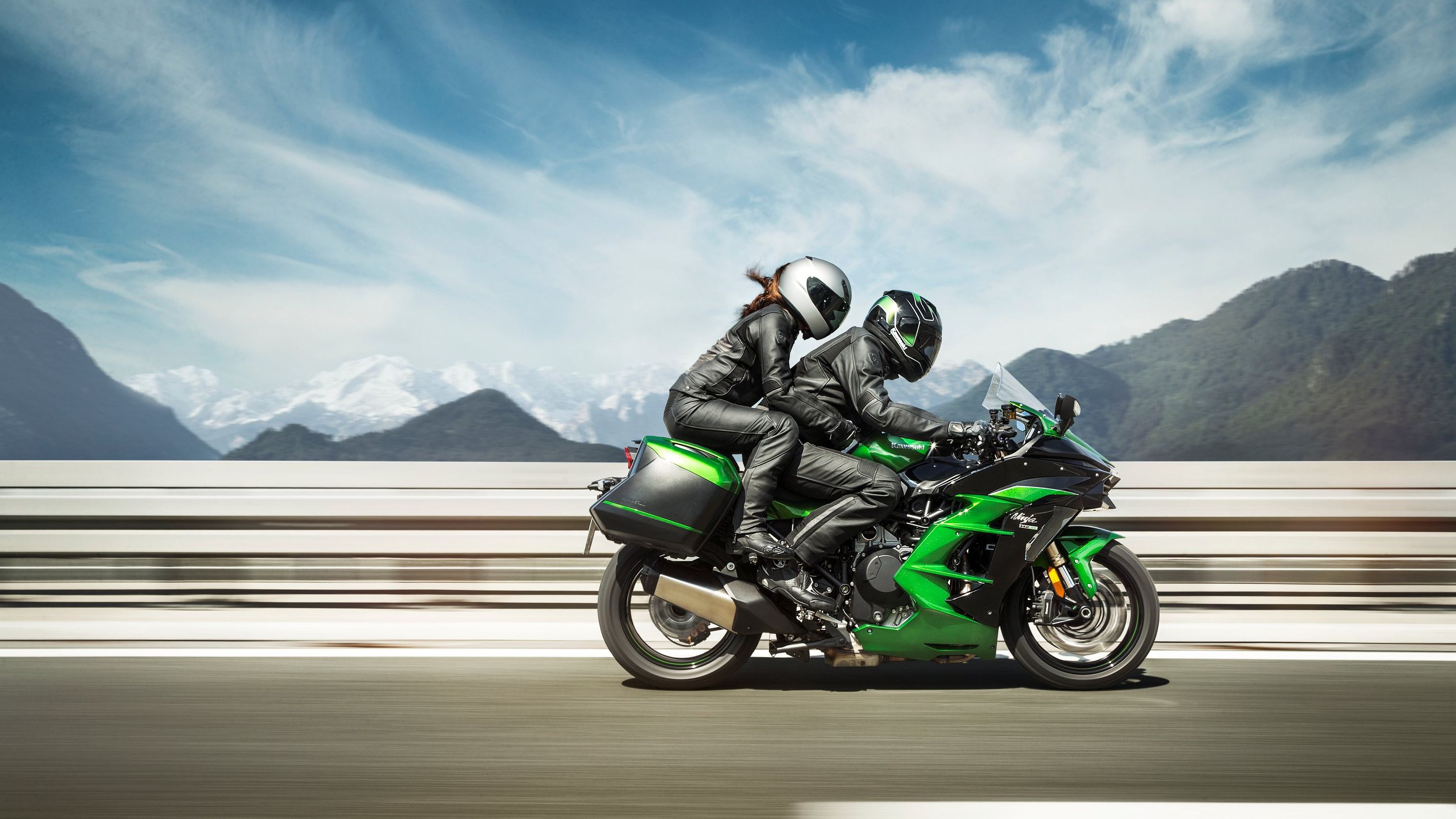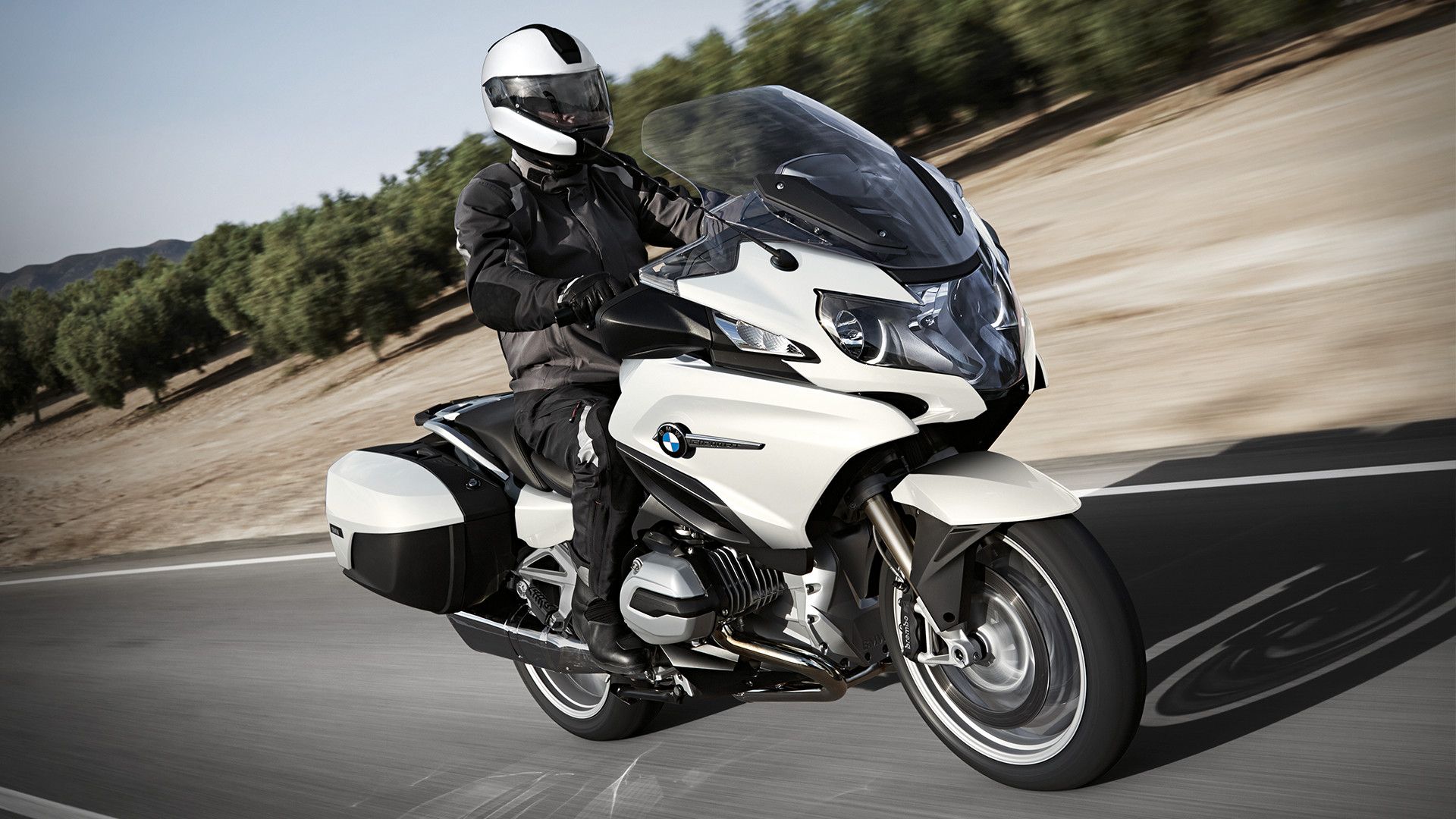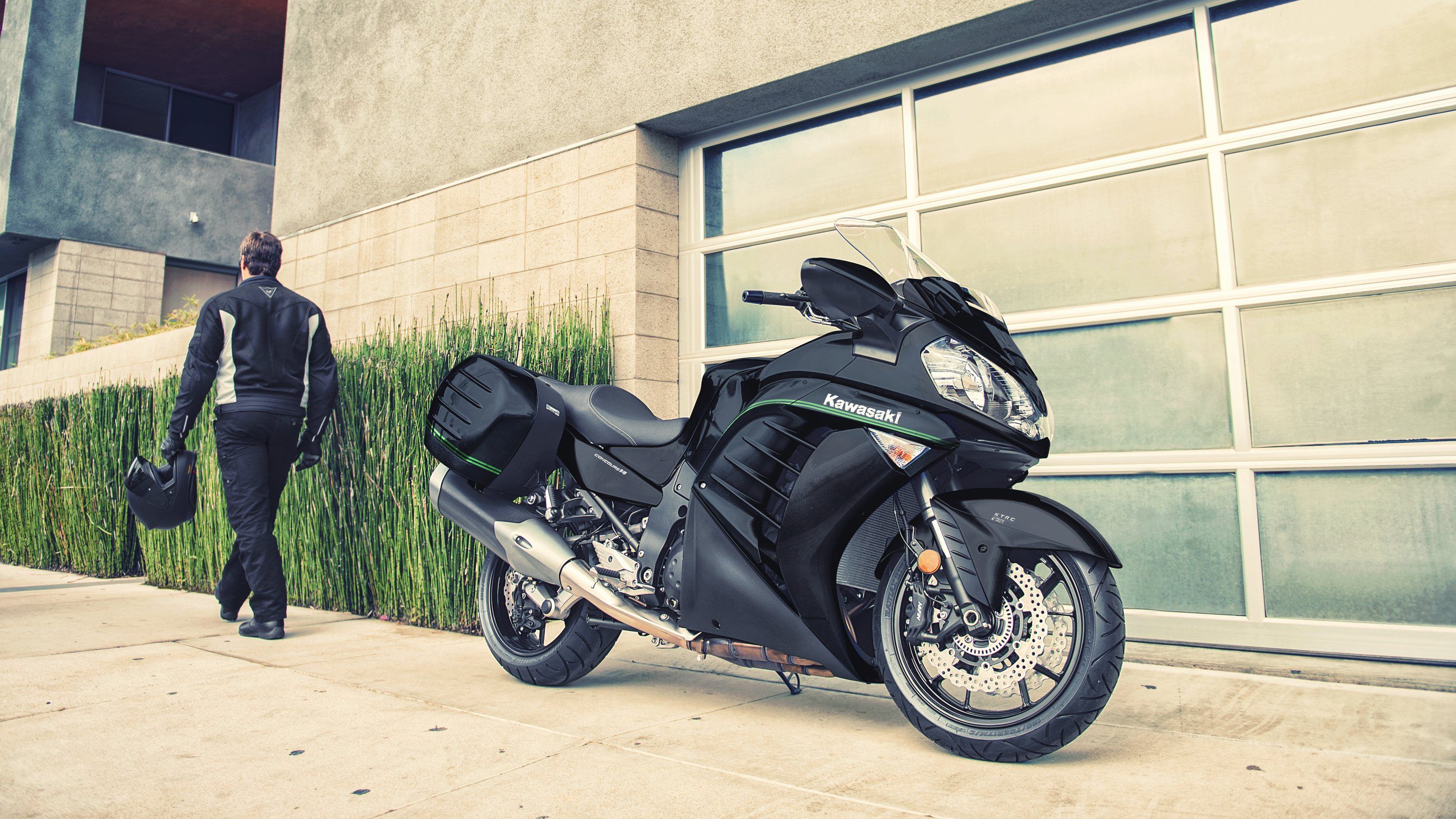Call them bikes that perfectly fill the gap between thrilling sportsbike and the gigantic touring machines, sports-tourers are simply long haul motorcycles with sportbike expectations built to get the best out of that long way home. Here is our list of 2018’s top ten machines offering the same capabilities as touring bikes but without sacrificing any of the sporty performance.
They tend to be a bit lighter and corner well but aren't the most comfortable. The riding position tends to be a bit more relaxed compared to sports machines, there's better wind protection, much better pillion comforts, transmission with lower gearing and usually a whole quick release pannier system designed in.
Honda CBR 650F
In 2015, Honda cracked up its first code in the middleweight segment with the fully faired sports tourer, the CBR 650F. This sporty but unintimidating machine from the Japanese workhorse promises to be a full-fledged sportsbike which can be very practical on a daily usage basis as well.
Honda has played it safe with the overall design language. Make no mistake, this metal shatters the predetermined notions of styling with practicality. A clean flow design with cuts and creases at the right spots makes it look butch and compact at the same time. It is obviously designed to appeal to a wide range of consumers and thanks to the HRC paint scheme, it is subtle yet striking.
The Honda features the 649cc in line four pot maxing at 85.3 bhp @ 11000 rpm. The torque figures are in the range of 46.5 lb-ft @ 8000 rpm. Mated to a 6-speed gearbox, this motor redlines at 11500 and sounds sweet after about 9000 rpm. The 16 valve DOHC design has helped the engineers in Japan to successfully constrict the dimensions of the engine unit helping a better air induction capability with the large panel type filter element.
The twin spar chassis does its job very well. The suspension setup is on the softer side and perfect for varied conditions with conventional front forks and a preloaded 7 step adjustable rear mono shock. The brakes on this are exceptionally good with widest disks of 320mm at the front and a single disc of 240mm at the rear. The widest amongst its competitors so to speak. Only the Honda offers ABS both front and rear.
The Dunlop tires are also the widest in the rear compared to the competition (180mm compared to others at 160 mm) giving a far better grip and comfort in both wet and dry conditions. You could score a base-model CBR650F in Matte Black Metallic/Candy Red or Matte Black Metallic for $8,749.
Yamaha Tracer 900 / GT
Essentially, Yamaha took the naked MT-09 (FZ-09 before) and added a bunch of things to give us an entry-level soft-roader that could take you between states. Starting with the standard tracer 900, Yamaha has given it a larger windshield in the front to defer more air than before, and with the shorter handlebars, most of your body will be protected by the God of Winds while giving you a more natural riding position.
The tank shrouds now adorn a faux air-scoop, and the radiator covers/side panels bulk up for a sporty stance. Yamaha has also given a soft pad on the tank to give the rider added comfort on longer journeys. And the pillion gets a redesigned footrest assembly for greater support. The saddle is redesigned to provide both the rider and the pillion enhanced comfort and feel. They also support the premium outlook the bike develops, especially in the rear along with the straight pillion grab handles. More importantly, you can now adjust both the seats in two levels of height positions.
Mechanically, however, the Tracer 900 keeps the 847cc three-cylinder torque-rich cross-plane engine making 115hp and 64.5 lb-ft of torque. Slip-and-assist clutch makes clutch actions a breeze, and the six-speed comes sans the quickshifter, unlike the MT-09. Enhancing the bike’s touring performance further, the Tracer gets newly designed aluminum swingarm as well as revised rear shock settings.
Electronic packaging is also unchanged with the Ride-by-Wire, traction control, riding modes and ABS which now comes as standard. The first 2019 Tracer 900 motorcycles destined for the US market are due to arrive in the 2nd half of 2018, and the MSRP will be announced in the coming months.
The Tracer 900 will be available with a price tag of $ 10,699 while the GT will fetch at $ 12,999. The GT gets 22 liters color-matched hard side cases, TFT instrument panel, heated grips, a quickshifter, and updated suspension.
Kawasaki Ninja 1000
Having diversified their skill sets in recent years, the fearsome Ninja brand got an upgrade on each of its models, with the latest one being this Ninja 1000. Basically, the sports bike which can hold a couple of bags on it and is a tad bit comfortable for longer stints. It promises to be sportier and more eager to roar and give you a competitive edge on those interstate highways and the streets.
To start with, the Ninja 1000 was always the dressed up version of the Z1000 naked streetfighter. Having remodeled to keep pace with modern superbikes, the bike features all new characteristic traits with the aggressive new dual LED headlights to its new angle-adjustable screen and mirrors. The bodywork seems to be on steroids with focused styling and sharp and minimalistic graphics to cash on its appeal as a track-honed superbike.
Kawasaki has updated the already potent 1043 cc engine with new ECU settings to uplift the performance package on the Ninja 1000. This fuel injected motor pumps out a maximum power output of 140 bhp of power and a maximum torque rating of 82 ft.lb. The engine is linked to a modern exhaust system which features a 4-into-2-pre-chamber-into-2 layout. Unlike the high-revving nature seen on the Z1000, most of the meat here lies in the lower range and mid-range of RPMs, which gives it the necessary credentials of stress-free performance and responsive feel of a typical sports tourer.
Yes, it is a sportsbike. There is no Ninja on the planet that isn’t one. But because it is aimed at being a semi-tourer of sorts, the Japanese honcho has given this 1000 a more approachable engine and ride settings, enabling it to munch miles for longer stretches of tarmac riding. The seating position is quite upright with the clip on laidback and raised handlebars and a neutral footrest position.
Suspension duties are taken up by beefy 41 mm USD forks. The rear has a shock linkage to the swingarm that comes with remote preload adjuster. Dual 300mm petal disc brakes at front and a single 250mm disc brake at the rear with KIBS ABS handle braking. Traction control, riding modes come with the price tag of a cool $12,199 MSRP in Candy Lime Green / Metallic Graphite Gray and Metallic Spark Black / Metallic Graphite Gray.
Suzuki GSX S1000F
To start with, the overall design of the Suzuki GSX S1000F is striking – but in a good way or bad, that depends on your perception. That being said, the visual appeal of the GSX S1000F may not be universally acceptable, due to its unconventional and ‘out of the box’ styling. But that may be its plus point as well, as the motorcycle looks like nothing in the category of sports tourers.
Alongside the name, the Suzuki GSX S1000F also shares its core heart with the naked streetfighter GSX S1000. This means that the GSX S1000F sources its thrust from the four-stroke, four-cylinder, fuel-injected, liquid-cooled, 999cc engine, which has a peak power rating of 144 bhp. Paired with a 6-speed gearbox, the engine is ultra-refined in a typical Suzuki manner, and has a linear power delivery to keep up with its touring credentials.
Other than the 999cc engine, the GSX S1000F retains other mechanical hardware such as a frame, suspension, and brakes from the GSX S1000. The bike is equipped with a set of inverted hydraulic telescopic forks at the front and link type hydraulic monoshock at the rear. Braking duties are taken care by dual discs at the front and a single disc at the rear, along with the Anti-lock Braking System (ABS).
The three-mode traction control on the GSX S1000F further enhances its usability in varying conditions, thus making it an easier bike to tame for the amateur riders as well – a big plus in its favor. With this, the GSX S1000F now becomes the most affordable fully faired superbike from Suzuki at MSRP $11299, positioned below both the GSX R1000 and the Hayabusa. The GSX S1000F is offered in two colors – Metallic Triton Blue and Glass Sparkle Black with Candy Daring Red.
KTM 1290 SuperDuke GT
KTM is right at the top giving thrill seekers a weapon unlike any. When the flagship Super Duke was released in 2014, it blew us away and reigned supreme in the super naked market. KTM made use of the same formula on their long-distance V-twin rocket, the 1290 SUPER DUKE GT. Along with the same chassis and powertrain, KTM boosted the tourability with a set of hard-side panniers and cruise control.
However, the addition of the front fairing and redesigned upper cowling is a clear departure from the naked “R” design. It also gets a hand-adjustable windshield that rides above the angular, front-fairing beak that houses the headlight and sets the tone for the rest of the machine. Shoulders built into the tank serve to form a knee pocket, and the bags come with quick-detach hardware.
Surprisingly though, KTM have kept their trust in the same 1301cc LC8 V-Twin mill that has been running since 2014, while everybody else is onto the V4s’. Clearly, folks at KTM believe strongly in the tried and tested powerplant. The GT plant puts out 106 pound-feet of torque, and when spooled up all the way it brings a total of 173 horsepower to the table. A six-speed transmission comes geared for highway travel with a slipper clutch actuation.
48 mm WP USD front forks and WP rear monoshock that sport a dynamic, semi-active ride handle the dampings while a pair of four-pot Brembo M50 Monobloc anchors grabs the dual, 320 mm front discs with a twin-piston binder and 240 mm disc out back. The cornering ABS feature keeps you glued to the pavement and the Hill Hold Control that engages the front brake for smooth uphill takeoffs.
It gets the all starts with the ride-by-wire throttle control that enables the switchable traction control, anti-accidental wheelie function, and the Motor Slip Regulation. U.S. buyers can expect a $19,999 MSRP on this ride.
Yamaha FJR1300
Being the biggest sport-tourer in Yamaha’s lineup, the FJR1300 saw multiple updates that gave it just enough tweaks to make it a smoother, more comfortable ride. Probably the biggest change in that update was in the transmission, giving it a smoother ride, as well as a sixth gear, and the addition of a slipper clutch to reduce hand fatigue.
A stylish revamp of the lights gets a thumbs up with LEDs all around. The bike also gets cornering lights, mounted above the headlights, come on when the bike detects lean. The bikes weigh in at 640+ pounds each, and that weight is an advantage on the highway. But luckily, the machine comes with electronic suspension with the setup on the handlebars.
Powered by a 1298cc inline-four, the shaft-driven FJR puts out around 145 horsepower and 102 pound-feet of torque and comes with a six-speed gearbox with a new, Assist-and-Slipper clutch for smooth and effortless riding for hours at ends. Multiple riding modes and traction control give for peace of mind when on the road.
Dual 320 mm front discs and a 282 mm rear disc work with the Unified Brake System calipers that deliver balanced braking effort by allowing the rear brake master cylinder to pressurize two of the eight front-caliper pistons at the same time as the rear. ABS protection comes as standard equipment.
MSRP on the 2018 FJE1300A is $16,399, just about the same as it was on its last appearance in 2016, and the FJR1300ES is $17,999. Both rides come in Matte Phantom Blue for 2018 and have a one-year limited factory warranty.
Kawasaki Ninja H2SX/SE
While we were still drooling over the radical H2 and H2R that can put any super sports to shame, Kawasaki decided to expand the overcharged family and give the same gut-wrenching soul to a biblical tourer. Called as the ninja H2 SX, it was co-developed by Kawasaki’s motorcycle and aerospace division. This ‘world’s only’ supercharged hyper sport touring motorcycle will have the ultimate blend of power, performance, refinement, comfort and fuel efficiency.
Wider body panels, bigger screen, 5-gallon fuel tank, plush two-up saddle, and revised rear frame to accommodate a passenger and the side panniers. This is all the external changes Kawa had to make with to make a sports tourer off the crazy H2 platform. Although a bit bulkier than the H2, these changes are vital for touring comfort.
Internally though, it is powered by the same 998cc mill that runs on the other two H2s’. Kawasaki claims that it would make around 207 hp under the hood, all thanks to a few improvements bestowed to the powerplant just to suit this 2018 touring iteration. No wonder they call it the ’second generation balanced supercharged engine.’ With the “Balanced Supercharged technology”, Kawasaki has given this bike greater low to mid-range pulling power for a real-world street use. The bike will also give you superior fuel economy without missing out on the fearsome accelerations and torque.
Mechanically and electronically, the SX will get similar top-of-the-line equipment like the H2 and H2R but will be tweaked to be softer and comfortable for long expanses. The riding stance will also be directed towards the sport touring market rather than the apex hunter. The SX will come in another variant called the Ninja H2 SX SE which is the pampered one of the two.
The SE model comes equipped with a color TFT instrumentation, cornering lights, up/down quick-shifter, Kawasaki Launch Control Mode (KLCM), large screen, heated grips, and a fancy-pants paint scheme. The prices on this pair are more reasonable with a $19,000 sticker on the Metallic Carbon Gray SX, and a $22,000 tag on the SX Special Edition in Emerald Blazed Green/Metallic Diablo Black.
BMW R 1200 RT
The full-size fairing, tons of equipment and the subtleness of a flat twin engine have been the major USPs of the BMW R 1200 RT, which have been inspired from the BMW’s flagship touring motorcycle, the K 1600 GT. With top-shelf engineering and luxury, that reputation is justified every time the R 1200 RT gets its regular updates.
In personal, the best word to describe the stance of the BMW R 1200 RT is ballistic. The motorcycle looks huge from every angle, with gigantic proportions to match its gran tourismo credentials. It gets a generous luggage rack and a power-adjustable windshield to dial in for preference and body type. LED lights all around comes in as standard.
The BMW R 1200 RT sources its power from a four-stroke, flat twin, oil/water cooled, 1170cc engine, which has been shared with the standard naked R 1200 R. Needless to say, this engine is one of the most ballistic twin cylinder engines available in the country, which pumps out 127.2 PS of power and 92 lb-ft of torque. The 6-speed helical type gearbox transmits all the power generated from the engine to the rear wheel via a Cardan type shaft.
Sitting on a bridge type cast aluminum frame, the motorcycle comes with a Telelever, 37mm central spring strut at the front and a cast aluminum single-sided swingarm with the paralever setup at the rear. BMW’s famed ESA II (Electronic Suspension Adjustment) allows electronically adjustable damping. The braking duties are taken care of by dual 320mm disc brakes at the front and a single 276mm disc brake at the rear with ABS Pro part of the standard equipment package.
Additionally, it packs in multi-controller, automatically heated grips, ABS, riding modes, automatic stability control, tire pressure control, traction control, and dynamic brake light. Beemer offers the 2018 R 1200 RT in Alpine White, Platinum Bronze Metallic or Carbon Black Metallic for $18,395.
Kawasaki Concours 14
The only manufacturer with three machines on this list, Kawasaki has been the spoilt choice for many sports-touring enthusiasts around the globe. Basically, a Ninja ZX-14R tuned up for touring, the Concours 14 is a mighty tourer with optimum low-speed maneuvering, rider comfort, safety, and handling.
The Concours 14 comes standard with color-matched quick-release hard saddlebags that lock and unlock with the ignition key as part of Kawasaki’s one-key system. Dynamic bodywork increases comfort by routing heat away from the rider and passenger. A tall, electrically adjustable windscreen creates a calm cockpit experience with help from ducts above the instrument panel, which balances pressure areas outside and inside the screen. Handgrip heaters come standard, providing comfort when the temperatures drop to disagreeably cold temperatures.
The motorcycle is propelled by a liquid-cooled, 4-stroke in-line four engine with a displacement of 1,352 ccs. The engine sends its power to the rear wheel through a six-speed transmission with wet multi-disc clutch. In terms of power, the 4-stroke unit cranks out 160 hp at 8,800 rpm and 100 lb-ft of torque at 6,200 rpm. The Tetra-Lever shaft drive, which routes all that power to the rear wheel, uses a four-link design.
Concours 14 is packed with technological features that enhance the riding experience. The bike’s K-ACT (Kawasaki Advanced Coactive-braking Technology) braking system offers two modes of linked, anti-lock braking and great overall performance. A high-tech traction control system (KTRC: Kawasaki Traction Control) not only reduces wheelspin on slick surfaces, offering riders more confidence-inspiring feedback, but it can be easily switched off at the rider’s discretion.
MSRP on the 2018 Concours 14 ABS is $15,599 and comes in Metallic Carbon Gray/Metallic Flat Spark Black. Kawasaki covers your Concours 14 with a 36-month limited warranty with optional Kawasaki Protection Plus™ for 12, 24, or 36 months.
Honda ST1300
One of the most popular long-distance tourers is the Honda ST1300A. Badged as a sports tourer, the ST1300A is especially appreciated for its perfect mix between speed and comfort, featuring a wide range of features that will make your ride as relaxed as possible.
As far as power is concerned, the Honda ST1300 is equipped with a 1260 cc, liquid-cooled 4-stroke, 16-valve, DOHC 90º V-4 engine which generates 117 Bhp at 8,000 rpm and 86.2 lb-ft of torque at 6,500 Rpm. The engine’s power is kept under control by a five-speed transmission. You also get a large 29-liter fuel tank which delivers a pretty generous riding range.
The unique adjustable seat is designed for all-day comfort. Low, centralized mass makes the machine reassuringly stable, yet it’s also nimble enough to negotiate city traffic and has some fun on twisty roads. High-performance Super Sports suspension systems smooth out bumpy surfaces while supreme control and stopping performance comes from Honda’s innovative Combined-ABS.
Priced at $18,230, the ST1300 occupies the higher end of the sport touring segment

